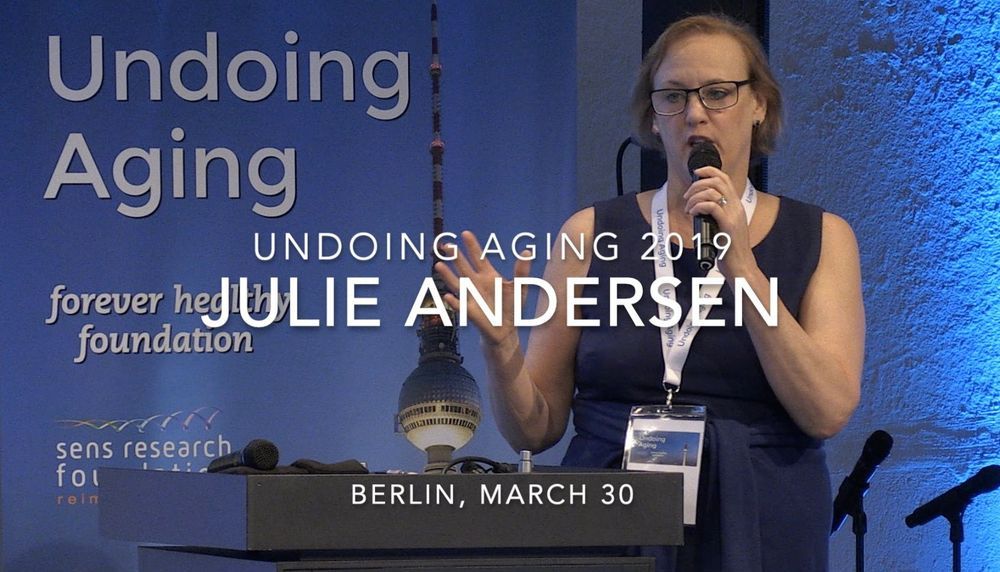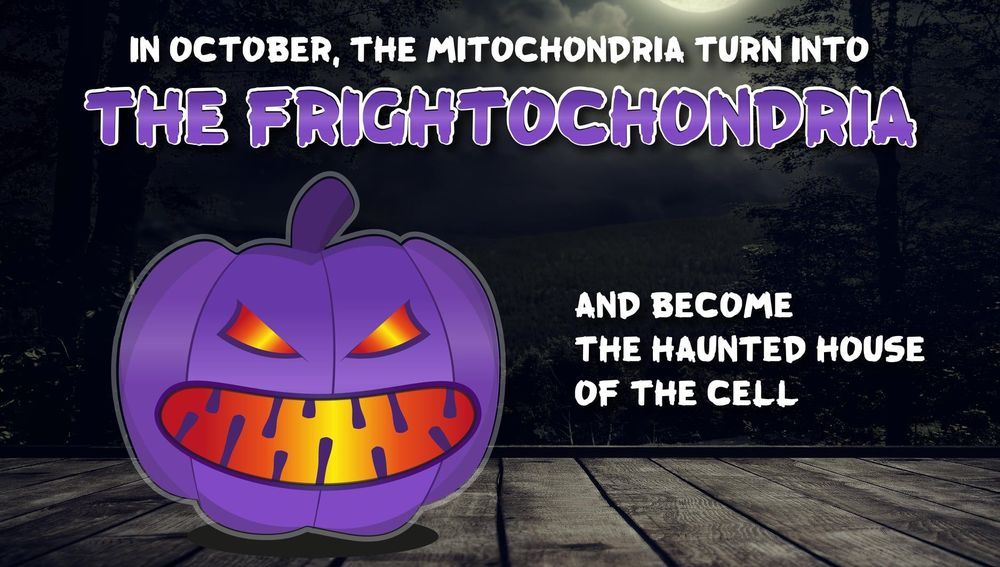undoing-aging.org/videos/julie-andersen-presenting-at-undoing-aging-2019
____________


By and Targeting Metabesity to examine the links between metabesity, Longevity and the USA’s current health shortfalls, including low health-adjusted life expectancy (“HALE”) and the large gap between HALE and life expectancy, despite its extremely high per-capita healthcare expenditures, and to chart policy recommendations to neutralize this vast health vs wealth deficit.
Metabesity and Longevity: USA Special Case Study is an 85-page open-access analytical report produced jointly by Aging Analytics Agency and Targeting Metabesity to examine the links between metabesity, Longevity and the USA s current health shortfalls, including low health-adjusted life expectancy ( HALE ) and the large gap between HALE and life expectancy, despite its extremely high per-capita healthcare expenditures, and to chart policy recommendations to neutralize this vast health vs wealth deficit.
Link to Special Case Study: https://aginganalytics.com/longevity-usa/
As the issue of aging population intensifies, sick care will become increasingly expensive and ineffective. America needs to rapidly deploy a government-led shift from treatment to prevention, and from prevention to precision health, using deep diagnostics and prognostics in combination with biomarkers of aging, metabesity, health and intervention-effectiveness, to delay the onset of disease with as minimal intervention as possible, as early as possible. Seeking synergies between Longevity research, P4 (preventive, personalized, precision and participatory) medicine and Artificial Intelligence has the potential to enable rapid and widespread policy and infrastructural reforms for USA healthcare to quickly boost National Healthy Longevity, but only with sufficient government commitment.
We’re continuing to release talks from Ending Age-Related Diseases 2019, our highly successful two-day conference that featured talks from leading researchers and investors, bringing them together to discuss the future of aging and rejuvenation biotechnology.
Dr. Peter Fedichev, co-founder of GERO, discussed biomarkers in the context of mouse research, particularly physiological frailty and blood cell counts. He introduced a new index, the Dynamic Frailty Index, and explained it in detail, including the advantages that it has over conventional frailty models and epigenetic clocks. He also explained the differences between humans and mice, most notably the fact that interventions that work in mice do not always apply to human beings.
This purpose of this video is to GET DR. BILL ANDREWS ON THE JOE ROGAN EXPERIENCE. You can help make this reality in many ways. Please start by joining the Facebook group: GET DR. BILL ANDREWS ON THE JOE ROGAN EXPERIENCE: https://www.facebook.com/pg/Get-Dr-Bill-Andrews-on-The-Joe-R…e_internal
I believe we can get closer to reversing human aging by finding stronger human telomerase activators if Dr. Bill Andrews/Sierra Sciences receives more funding ($50 million USD would probably be enough for Dr. Andrews and his team to discover stronger human telomerase activators within a year).
My mission is to drastically improve your life by helping you break bad habits, build and keep new healthy habits to make you the best version of yourself. I read the books and do all the research and share my findings with you!
- My book review of Telomere Lengthening: Curing all diseases including cancer & aging by Dr. Bill Andrews: https://youtube.com/watch?v=5ODN5DIMz6c&t=6s
- telomere shortening does not occur in our human reproductive cells; I (Brent Nally) believe this is why babies are not born the same age as their parents.
- Watch the documentary “The Immortalists” about Dr. Bill Andrews & Dr. Aubrey de Grey: https://theimmortalists.com/watch/?
- Watch my interview of Dr. Aubrey de Grey: https://www.youtube.com/watch?v=TquJyz7tGfk&t=2s
- lack of funding is preventing a cure to human aging.
- Dr. Andrew’s Facebook: https://facebook.com/telomere.bill.andrews
- Dr. Andrew’s LinkedIn: https://linkedin.com/in/william-h-andrews-5455b45/
- Dr. Andrew’s Wikipedia: https://en.wikipedia.org/wiki/William_H._Andrews_(biologist)
- Sierra Sciences website: https://sierrasci.com/
- https://defytime.com/product/telomere-aging-care-capsules/
- Forever Labs 1 year free cryogenic storage discount code ($250 value): BN801

Individuals of the same age may not age at the same rate. Quantitative biomarkers of aging are valuable tools to measure physiological age, assess the extent of ‘healthy aging’, and potentially predict health span and life span for an individual. Given the complex nature of the aging process, the biomarkers of aging are multilayered and multifaceted. Here, we review the phenotypic and molecular biomarkers of aging. Identifying and using biomarkers of aging to improve human health, prevent age-associated diseases, and extend healthy life span are now facilitated by the fast-growing capacity of multilevel cross-sectional and longitudinal data acquisition, storage, and analysis, particularly for data related to general human populations. Combined with artificial intelligence and machine learning techniques, reliable panels of biomarkers of aging will have tremendous potential to improve human health in aging societies.
Keywords: physiological age, phenotypic, molecular, age-associated diseases, aging process.
Aging is the time-dependent physiological functional decline that affects most living organisms, which is underpinned by alterations within molecular pathways, and is also the most profound risk factor for many non-communicable diseases. To identify biomarkers of aging would, on one hand, facilitate differentiation of people who are of the same chronological age yet have variant aging rates. Quantitative biomarkers of aging could also define a panel of measurements for ‘healthy aging’ and, even further, predict life span. On the other hand, biomarkers of aging could also assist researchers to narrow their research scope to a specific biological facet in their attempts to explain the biological process behind aging or aging-related diseases. Here, we review the phenotypic and molecular biomarkers of aging. Phenotypic biomarkers can be non-invasive, panoramic, and easy to obtain, whereas molecular biomarkers can reflect some of the molecular mechanisms underlying age status.

Unfortunately, as we age they begin to breakdown due to damage.
MitoSENS project aims to reverse that damage with the goal of preventing age-related ill health. In their first study, they managed to show that allotopic expression of two mtDNA genes from the nucleus could bring back several functions in a patient cell line.
MitoSENS team is currently running a crowdfunding campaign on Lifespan.io to collect money for the next crucial step of this project. Scientists want to investigate if functional backup copies of mitochondrial DNA genes in the nucleus can replace their mutated counterparts in live animals, and if this could rescue mitochondrial function.
This year I had the privilege to record in full Liz Parrish talk delivered at RAADfest 2019 (Revolution Against Aging and Death Festival 2019), which took place in Las Vegas, NV from 3 to 6 of October.
During her talk, Liz tells us about recent developments in the field of gene therapy and what her company BioViva is doing to benefit society by harnessing the power of it.
Don’t miss it!!!

Now is a great time to donate and help to unlock the stretch goals.
https://www.lifespan.io/mitomouse
Longecity is also offering ways to match your donations and you can find out more about that on the project page.
David Sinclair, professor of genetics at Harvard Medical School, discusses his new book “Lifespan”, which distills his cutting-edge research findings on the biological processes underpinning aging. Sinclair describes lifestyle hacks we can undertake now to combat aging, as well as future scientific breakthroughs that promise to slow down—and even reverse—the aging process.
Moderated by: Sam Phippen
Get the book: https://goo.gle/2LXCd2P

Second prize is a trip to meet Dr. Aubrey de Grey! This international (short) film competition is presented by the SENS Research Foundation, the International Longevity Alliance and Heales. The winning film will be chosen by our remarkable jury. For more information on how to compete and to sign up please visit www.longevityfilmcompetition.com